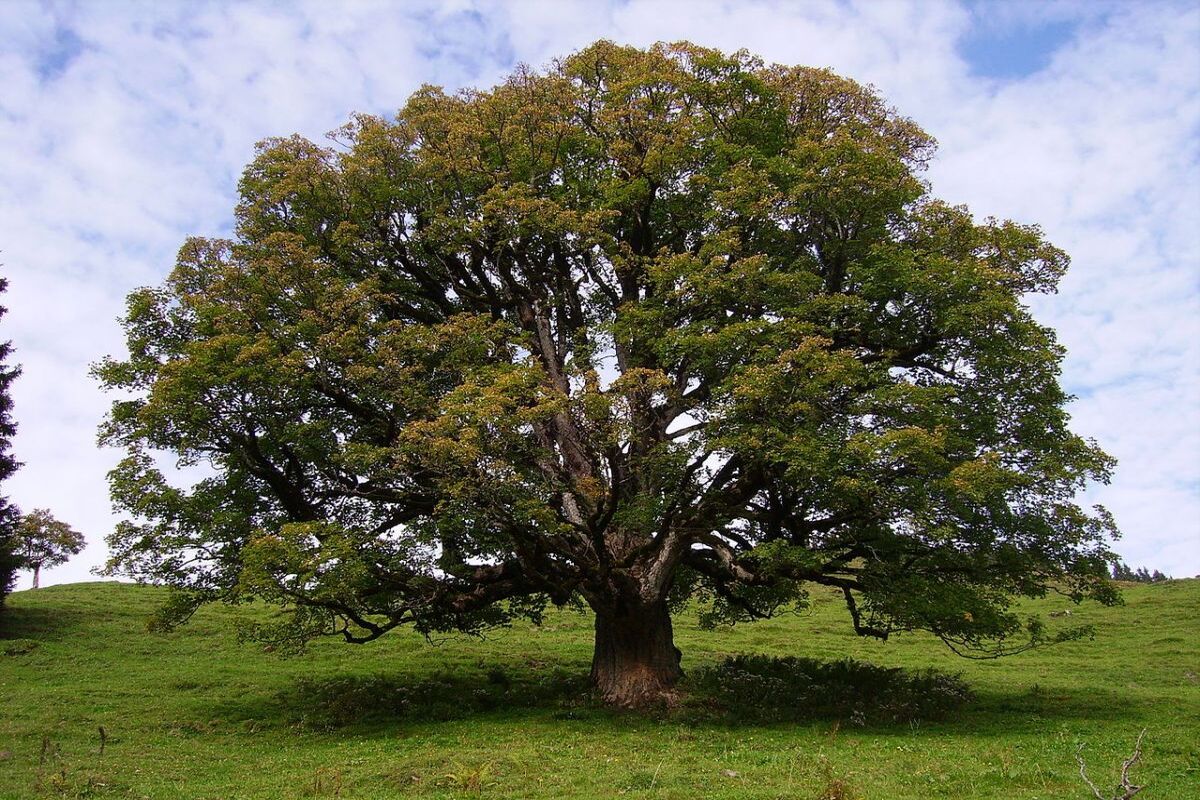
The sycamore maple tree, scientifically known as Acer pseudoplatanus, is a captivating species that has long fascinated nature enthusiasts and arborists alike. With its striking appearance and rich history, this tree holds a special place in the world of botany and beyond. From its unique characteristics to its ecological significance, the sycamore maple tree is a subject of great interest and admiration.
In this article, we will delve into 20 fascinating facts about the sycamore maple tree, shedding light on its diverse attributes, cultural symbolism, and ecological role. Whether you're a nature lover, a student of botany, or simply curious about the natural world, these insights will offer a deeper understanding of this remarkable tree species. So, let's embark on a journey through the enchanting realm of sycamore maple trees, uncovering the secrets and wonders that make them such a cherished and essential part of our natural environment.
Key Takeaways:
- The Sycamore Maple tree, native to Europe and Asia, stands tall at 35 meters, with unique bark and palmately lobed leaves. Its wood is prized, and it has cultural significance.
- Sycamore Maple trees support biodiversity, inspire artists, and symbolize strength and natural beauty. They also provide environmental benefits like air purification and soil conservation.
The Sycamore Maple tree is native to central Europe and western Asia.
Originating from the heart of Europe and parts of Asia, the Sycamore Maple tree has a storied history deeply rooted in these regions.
It is a deciduous tree with a broad, rounded crown.
During the fall season, the Sycamore Maple tree sheds its leaves, adorning the ground with a vibrant tapestry of colors, before the leaves regrow in the spring.
The tree can reach heights of up to 35 meters.
With its towering presence, the Sycamore Maple tree stands as a testament to the majesty of nature, reaching impressive heights in its habitat.
Sycamore Maple trees have a distinctive bark with a patchy appearance.
The bark of the Sycamore Maple tree is characterized by its unique patchwork pattern, adding to the tree's allure and making it easily recognizable.
The leaves of the Sycamore Maple tree are palmately lobed.
The leaves of this tree are deeply lobed, resembling the shape of a human hand, and contribute to its distinct and recognizable appearance.
Its flowers are greenish-yellow and appear in clusters.
During the blooming season, the Sycamore Maple tree graces its surroundings with clusters of greenish-yellow flowers, adding a touch of natural splendor to the landscape.
Sycamore Maple trees produce winged seeds called samaras.
These winged seeds, also known as samaras or "helicopter seeds," are a unique feature of the Sycamore Maple tree and play a vital role in its reproduction.
The wood of the Sycamore Maple tree is prized for its versatility.
Renowned for its durability and versatility, the wood of the Sycamore Maple tree has been utilized in various applications, including furniture making and musical instrument crafting.
The tree has a long history of traditional medicinal uses.
Throughout history, the Sycamore Maple tree has been revered for its medicinal properties, with various parts of the tree used in traditional remedies and herbal preparations.
Sycamore Maple trees have been introduced to other parts of the world, including North America.
Beyond its native habitat, the Sycamore Maple tree has found new homes in different corners of the globe, contributing to the diverse tapestry of flora across continents.
The tree is known for its resilience and adaptability.
Thriving in diverse environmental conditions, the Sycamore Maple tree exhibits remarkable resilience and adaptability, making it a symbol of strength in the natural world.
Sycamore Maple trees play a role in supporting biodiversity.
As a vital component of ecosystems, the Sycamore Maple tree provides habitats and sustenance for various organisms, contributing to the intricate web of biodiversity.
The tree has cultural significance in folklore and traditions.
Embedded in folklore and cultural traditions, the Sycamore Maple tree holds a special place in the hearts and stories of communities across its native regions.
Sycamore Maple trees are celebrated for their aesthetic value in landscaping.
Admired for their striking appearance and ornamental value, Sycamore Maple trees are often featured in landscaping and horticultural designs, adding a touch of elegance to outdoor spaces.
The tree's shade and sheltering qualities make it a cherished presence in parks and gardens.
With its expansive canopy and sheltering embrace, the Sycamore Maple tree provides shade and refuge, making it a beloved fixture in parks and gardens.
Sycamore Maple trees have inspired artists and poets throughout history.
From evocative paintings to lyrical verses, the Sycamore Maple tree has stirred the imagination of artists and poets, leaving an indelible mark on creative expressions.
The tree's environmental benefits include air purification and soil conservation.
Beyond its visual appeal, the Sycamore Maple tree contributes to environmental well-being through its role in purifying the air and conserving soil integrity.
Sycamore Maple trees have been the subject of scientific research and conservation efforts.
Scientists and conservationists have been captivated by the Sycamore Maple tree, leading to research initiatives and conservation endeavors aimed at preserving this remarkable species.
The Sycamore Maple tree symbolizes strength, resilience, and natural beauty.
Embodying enduring qualities, the Sycamore Maple tree stands as a symbol of strength, resilience, and natural beauty, leaving an indelible impression on those who encounter it.
The Sycamore Maple tree holds a special place in the hearts of nature enthusiasts and arborists.
For nature enthusiasts and arborists, the Sycamore Maple tree holds a special allure, inspiring admiration and fostering a deep appreciation for the wonders of the natural world.
The Sycamore Maple tree, with its rich heritage and captivating attributes, continues to enchant and inspire individuals across the globe, weaving its timeless tale into the fabric of nature's grand tapestry.
Conclusion
In conclusion, the Sycamore Maple tree is a remarkable species that holds both ecological and cultural significance. Its distinctive appearance, hardy nature, and diverse uses make it a valuable addition to landscapes and forests. As a shade tree, the Sycamore Maple provides cooling relief during hot summers and stunning foliage displays in the fall. Its wood is prized for its strength and beauty, serving various purposes in carpentry and musical instrument construction. Furthermore, the Sycamore Maple's role in supporting wildlife and enriching ecosystems underscores its importance in the natural world. By understanding and appreciating the unique characteristics of the Sycamore Maple, we can foster a deeper connection with nature and promote its conservation for future generations.
FAQs
What are the ideal growing conditions for Sycamore Maple trees?Sycamore Maple trees thrive in moist, well-drained soil and prefer locations with full to partial sunlight. They are adaptable to various soil types and can withstand urban environments, making them versatile additions to landscapes.
Are Sycamore Maple trees susceptible to any specific pests or diseases?While generally hardy, Sycamore Maple trees can be vulnerable to issues such as powdery mildew, tar spot, and scale insects. Regular monitoring and proper care, including adequate watering and pruning, can help mitigate these potential concerns and maintain the tree's health.
Was this page helpful?
Our commitment to delivering trustworthy and engaging content is at the heart of what we do. Each fact on our site is contributed by real users like you, bringing a wealth of diverse insights and information. To ensure the highest standards of accuracy and reliability, our dedicated editors meticulously review each submission. This process guarantees that the facts we share are not only fascinating but also credible. Trust in our commitment to quality and authenticity as you explore and learn with us.


